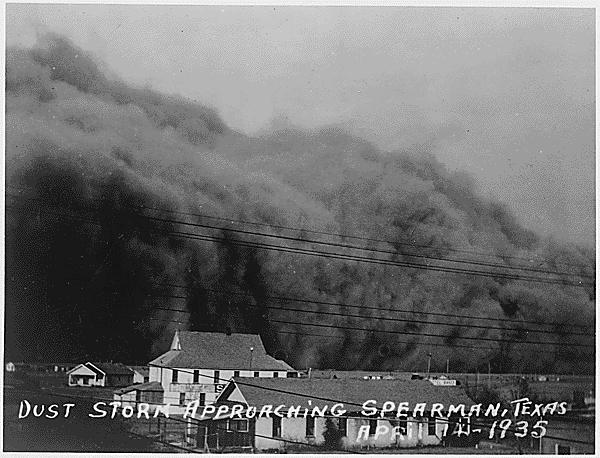|
On April 14, 1935, a cold front blew a massive wall of dust south through Kansas, Oklahoma, and Texas. The churning blackness towered hundreds of feet above the barren plain. It raced at fifty or sixty miles per hour. A journalist trying to outrun the storm drove with his car door open to see the edge of the road. In an article the next day, he coined the term “Dust Bowl.”
The Black Sunday storm was the worst of several in the Dust Bowl decade, caused by overgrazing and overcropping that left nothing to hold the soil. Millions left the region as farming became impossible. The experiences of people uprooted by the Dust Bowl inspired countless novels for adults, from Grapes of Wrath (John Steinbeck, 1939) to West with Giraffes (Lynda Rutledge, 2021). Reading Blue Willow (Doris Gates, 1940) was a significant influence in my childhood. It tells of migrant farm workers in California: Dust Bowl refugees Janey Larkin and her parents from Texas, and Janey’s friend Lupe Romero from Mexico. Written by a librarian who worked with migrant children in Fresno, the book drew criticism from some who disapproved of stark realism in stories for children. Unaware of any controversy, I was utterly fascinated and engaged. Like books set long ago or far away, Blue Willow fed my lifelong curiosity about lives very different from my own. It introduced me to children in my own country, in more or less my own time, with lives every bit as unfamiliar. I’d seen Appalachian poverty and outmigration to industrial cities like Akron or Baltimore, but migrant farm labor was a whole new world to me. The Dust Bowl added another piece to the puzzles I’ve been assembling ever since. Image: The Black Sunday dust storm approaching Spearman, Texas on 04/14/1935. The National Archives.
0 Comments
Leave a Reply. |
AuthorI'm a historian who writes novels and literary nonfiction. My home base is Madison, Wisconsin. Archives
July 2024
|

 RSS Feed
RSS Feed